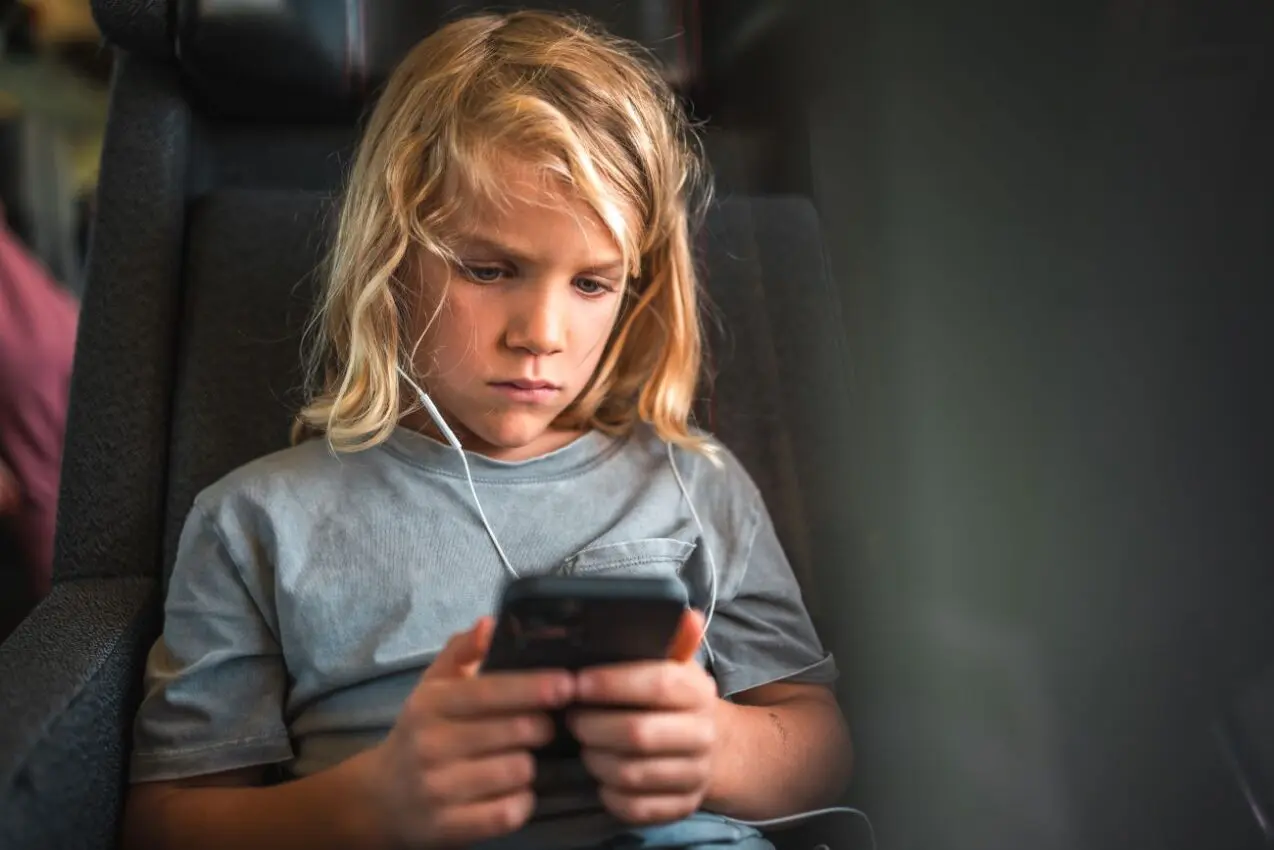(CNN) — As kids head back to school, many schools aren’t allowing them to bring their phones to class. Legislation to ban phones in schools has been proposed or passed in many cities and states. Most schools already have policies prohibiting them for nonacademic use, according to the National Center for Education Statistics.
Parents often question these policies because they want to be able to reach their kids in an emergency such as a school shooting.
Yet research suggests it’s not just a good idea for kids to put their phones away while in class — they shouldn’t bring them to school at all.
Some 97% of 11- to 17-year-olds use their phones during school time, for an average of 43 minutes, according to a 2023 Common Sense Media study. If they’re checking their phones between classes or at lunch and recess, they’re likely preoccupied with what they’re seeing on their screens and therefore spending less time talking, playing or even just hanging out with their friends.
Such preoccupation is not healthy because, as social psychologist Jonathan Haidt wrote in “The Anxious Generation: How the Great Rewiring of Childhood is Causing an Epidemic of Mental Illness,” one of the most important things young people should be doing is playing with peers.
In doing so, they learn to navigate social dynamics and build skills by figuring out how to do different activities. It teaches them they can handle other challenges they’ll face in the future, which Haidt said can help protect them from anxiety.
Smartphones aren’t making kids smarter
But phones aren’t just intruding on kids’ time outside class. In a June Pew Research Center survey, 72% of public high school teachers said cell phone distractions are a major problem in their classrooms. If children are sneaking peeks at their phones, they can’t possibly be paying attention to what they’re supposed to be learning. A wide body of evidence tells us the human brain can’t multitask — we can only do one thing at a time.
One indicator that students aren’t learning as much at school as they did in the pre-phone era is scores on the ACT — a standardized test that measures whether they have the English, reading, math and science skills needed for first-year college courses. Last year, ACT scores dropped to the lowest level in more than 30 years, according to the organization that administers the test.
As a professor who has taught at five universities since 2010, I’ve witnessed this trend myself. When I first started teaching, before smartphones became ubiquitous, many of my students arrived better able to concentrate and work through long reading passages than they are now.
Of course, it’s easy to imagine how kids will respond if we ask them to leave their phones home: They’ll promise not to check them during the school day. Unfortunately, it’s unreasonable to expect them to fight the urge to look at products that are designed to be addictive, with features such as bottomless scrolling and continuous notifications. The average teen gets 237 phone notifications a day on their phones, according to the Common Sense Media study — with a quarter coming in during the school day.
Sending kids to school sans smartphones forces them to concentrate on what’s happening in front of them rather than on their screens. That’s another important skill to learn.
“The phone-based life makes it difficult for people to be fully present with others when they are with others, and to sit silently with themselves when they are alone,” Haidt warned.
Smartphones and safety
What’s more, the idea that having a phone with them makes kids safer is often a myth.
Phones can be dangerously distracting to teens. At one of my recent talks at a private school, the school psychologist told parents she regularly sees their children walk out of school looking at their screens while crossing the streets of Manhattan. So, phones may cause emergencies in the first place.
Of course, if children have a crisis on the way home from school, in most places in the United States, there will be businesses and people around with phones who will be willing to let them call their parents.
Similarly, while many parents wish they could reach their children in the unthinkable event of a school shooting, kids will be safer if they remain quiet and focused on the instructions they receive from school administrators or law enforcement.
In addition, children often have extraordinarily dangerous experiences on their phones. In August, a report by Thorn, a nonprofit that combats child sex abuse, revealed that the great majority — 59% — of youth said they’ve had online experiences that have been potentially harmful. One in 3 minors and 1 in 5 preteens said they’d had online sexual experiences with someone they thought was an adult, according to the report.
It’s true that letting kids bring phones to school can make coordinating things like pickups after extracurricular activities easier. If children truly need a phone to communicate with their parents — perhaps because they have a medical condition and need to be able to reach someone in an emergency or because their pickup arrangements are so complicated that a time and location can’t be set in advance — one option Haidt recommended is an old-fashioned flip phone. Having one lets them text or call but not log on to social media apps.
Sending kids to school with smartphones is unlikely to make them smarter or safer. It’s more likely to distract them and make them unable to focus on learning.
Without a phone, kids can focus on interacting with peers, learning and being fully present in their surroundings — rather than having these things compete for their attention with influencers and internet memes.
Kara Alaimo is an associate professor of communication at Fairleigh Dickinson University. Her book “Over the Influence: Why Social Media Is Toxic for Women and Girls — And How We Can Take It Back” was recently published by Alcove Press. Follow her on Instagram, Facebook and X.
The-CNN-Wire
™ & © 2024 Cable News Network, Inc., a Warner Bros. Discovery Company. All rights reserved.

 Italy, Albania, UAE sign deal for energy subsea interconnection
Italy, Albania, UAE sign deal for energy subsea interconnection
 European shares advance as bond yields ease; soft inflation powers UK stocks
European shares advance as bond yields ease; soft inflation powers UK stocks
 Bank Indonesia delivers surprise rate cut to support growth
Bank Indonesia delivers surprise rate cut to support growth
 Novak Djokovic breaks a tie with Roger Federer for the most Grand Slam matches in tennis history
Novak Djokovic breaks a tie with Roger Federer for the most Grand Slam matches in tennis history
 China's RedNote: what you need to know about the app TikTok users are flocking to
China's RedNote: what you need to know about the app TikTok users are flocking to
 British author Neil Gaiman denies ever engaging in non-consensual sex as more accusers come forward
British author Neil Gaiman denies ever engaging in non-consensual sex as more accusers come forward








